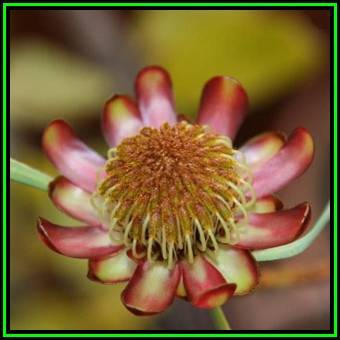
Protea acuminata - 10 Seed Pack -Blackrim Sugarbush, Indigenous Endemic Cut Flower Fynbos Shrub, New
Check my rate
| Main centres: | 1-3 business days |
| Regional areas: | 3-4 business days |
| Remote areas: | 3-5 business days |

| Main centres: | 1-3 business days |
| Regional areas: | 3-4 business days |
| Remote areas: | 3-5 business days |
Protea is both the botanical name and the English common name of a genus of South African flowering plants, sometimes also called sugarbushes in Eglish and Suikerbos in Afrikaans. The genus Protea was named after the Greek god Proteus, who could change his form at will, because plants within this genus have such a wide variety of forms. The Proteaceae family to which proteas belong is an ancient one. Its ancestors grew in Gondwana, 300 million years ago. Most protea occur south of the Limpopo River. 92% of the species occur only in the Cape Floristic Region, a narrow belt of mountainous coastal land from Clanwilliam to Grahamstown, South Africa. They are evergreen shrubs or trees usually found in fynbos. Protea blossoms make excellent cut flowers, keeping their colour for up to three weeks.
Protea acuminata commonly known as Blackrim Sugarbush is a South African endemic species. It is an erect shrub that grows 1m to 2m high and wide. It can normally be found on sandy flats at elevations of around 400m. There are only a few isolated populations left in the vicinity of Nieuwdtville, Cederberg, and Steynskloof to Riversonderderend Mountains. It has smooth linear leaves and in spring it is covered in small flowers with wine red bracts. |